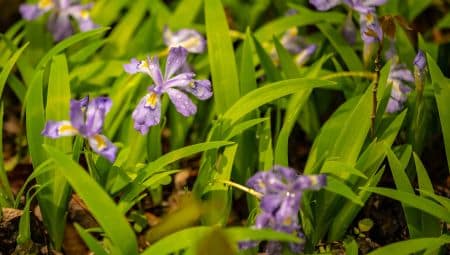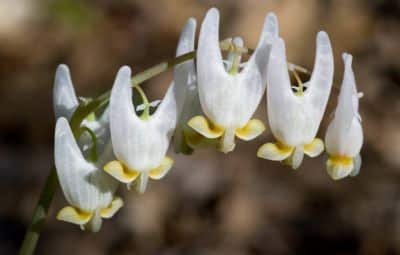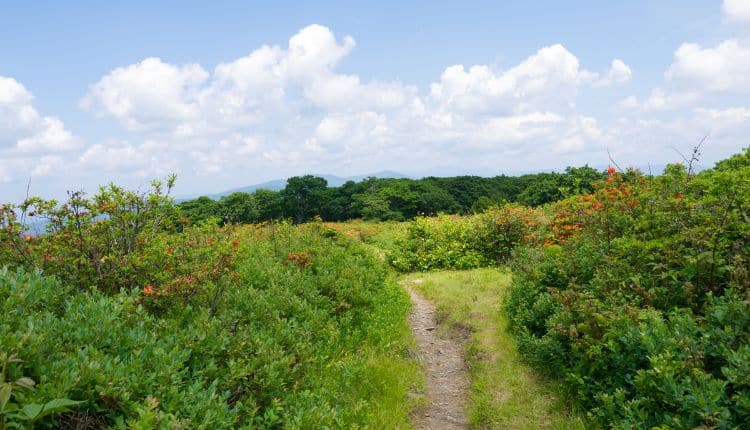Spring Wildflowers In The Smoky Mountains
On April 12, 2023
Spring in the Great Smoky Mountains can be a beautiful time of year. The season typically begins in March and lasts through May, with temperatures gradually warming up and nature coming back to life after the winter months.
During the early part of spring, you can expect to see blooming wildflowers and the emergence of new leaves on trees and shrubs. As spring progresses, the weather becomes milder, and the scenery becomes lusher and greener.
It’s a great time to visit the Great Smoky Mountains if you enjoy hiking, wildlife viewing or simply taking in the natural beauty of the area. Just be aware that weather can be unpredictable in the mountains, so it’s a good idea to pack layers and be prepared for sudden changes in temperature or precipitation.

If you’re planning on coming to Pigeon Forge over the next few months, taking a trip to see the spring wildflowers that bloom in Great Smoky Mountains National Park is a must.
Spring wildflowers that bloom in the Great Smoky Mountains
Some of the earliest spring wildflowers to bloom in Great Smoky Mountains National Park (GSMNP) don’t even wait for spring. Ephemerals like daffodils, jonquils, chickweed and violets start blooming in late winter, sometimes as early as February.
The saying, “April showers bring May flowers,” couldn’t hold truer than it does in Great Smoky Mountains National Park. Higher levels of precipitation mean even more rainfall accumulation at higher elevations up in the mountains. The additional rainfall results in even more spectacular wildflower displays during spring in the Smoky Mountains. Several species of wildflowers that typically reach their peak during May include foam flower, rue anemone, yellow trillium, painted trillium, catesby trillium and little brown jugs.
Here are some of the most popular wildflowers you might see during spring in the Smokies:
Wild daffodils
Wild daffodils are some of the most common wildflowers you’ll see in Great Smoky Mountain National Park. Daffodils have distinct white/pale yellowish petals and a yellow trumpet. These flowers are unique because once planted they tend to come back every year in bigger numbers than before.
Jonquils
Jonquils are another common type of wildflower that are closely related to the daffodils. These flowers have bright yellow petals and a matching yellow trumpet. Both jonquils and daffodils were very common around households in the pre-park days. If you come across a patch today, you’re likely standing where an old home site once stood. In addition to names like “daffodils” and “jonquils”, these flowers were also referred to as “Easter flowers” by inhabitants of the Smokies. This is because the blooming period peaks around the same timeframe as the Christian holiday Easter.


White trillium
White trillium are beautiful wildflowers typically found in the mid to lower elevations of Great Smoky Mountains National Park. The large bell-shaped flower has three white leaves that surround a yellow center and turn pink with age.
White fringed phacelia
White fringed phacelia are tiny delicate flowers that grow in large colonies throughout the park, typically in mid to high elevation areas. In the Porters Creek area of Greenbrier, these wildflowers blanket the ground during peak bloom.


Yellow trillium
Yellow trillium has a single yellow flower with petals that are narrow and stand erect. They are most often found in lower elevations of the park.
Painted trillium
Painted trillium has three white leaves around a yellow center, with a maroon “v” painted near the bottom. These wildflowers are most often seen in higher elevations of the park.


Crested dwarf iris
Crested dwarf iris is a unique wildflower with its blue/purple colors and petal-like sepals each dawning a yellow crest. These wildflowers often grow in large clumps in mid to low elevations and are especially beautiful after a recent rain when there are still drops on the petals. It’s the perfect opportunity to grab great photos!
Showy orchis
Showy orchis has two long egg-shaped basal leaves and each flower has a pink or lilac-colored hood with a white lip. These unique flowers are typically seen in mid to lower elevations of the national park during the early part of May.


Dutchman’s breeches
Dutchman’s breeches have an appearance like that of a pair of pantaloons hung on the line to dry. This white flower hangs over a leafless stalk and is commonly seen throughout many different areas of the national park.

Best places to see spring wildflowers in the Great Smoky Mountains
With more than 1,500 different kinds of flowering plants growing throughout Great Smoky Mountains National Park, you won’t have to go far to enjoy an amazing wildflower experience. Here are a few of the best places to see spring wildflowers in the Great Smoky Mountains.
Cades Cove
Cades Cove is one of the best places to see daffodils and jonquils. After you enter the “loop” in Cades Cove, you’ll pass one of the Civilian Conservation Corps (CCC) camps that were active in the 1930s. The flowers were planted in a pattern that spelled out “CO 5427”- the official name of the CCC camp. Today, these jonquils have multiplied and spread across the field, but if you look closely, you can still see the name of the camp spelled out by the patches of bright yellow flowers.

Schoolhouse Gap Trail
Schoolhouse Gap Trail features many early blooming spring and summer wildflowers. This scenic 2.2-mile trail starts at Laurel Creek Road and gradually inclines in elevation to School House Gap. You’ll see Virginia bluebells along the lower portions of this trail. And then pink lady’s slippers, golden aster, trillium and many more beautiful wildflowers as you proceed higher.

Little River Trail
Little River Trail is a wide and flat graveled trail in the historical district of Elkmont that parallels the Little River. Along the lower portions of the trail are patches of rhododendron. And during spring, from mid-March through May, you’ll also see spring beauties and trailing arbutus.

Porters Creek Trail
Greenbrier, and specifically the Porters Creek area, is famous for its wildflowers. This area of the park is known to have some of the most beautiful displays of spring wildflowers in the world. Trilliums, lady slippers, and the famous fringed phacelia will begin to sparkle throughout the Greenbrier area sometime in March or April. And purple dwarf irises grow in large clumps throughout the area. White trilliums begin to bloom in this area, but typically don’t peak until May. The same goes for the little white squirrel corn and Dutchman’s breeches. Mayapples, which are large umbrella-like plants, are plentiful here. And you’ll see the tall skinny bishop’s cap pretty much everywhere.

Gregory Bald
Gregory Bald is an area located in Cades Cove and known for its incredible views any time of year. But a visit to Gregory Bald when the spectacular flame azaleas reach peak bloom around mid-to-late June is truly a sight to behold. This area is accessible via Gregory Ridge Trail, which is located at the end of Forge Creek Road.

Middle Prong Trail
Middle Prong Trail, located in the Tremont area, near Townsend, is an amazing waterfall hike. This trail passes three major waterfalls, in addition to smaller falls and cascades. During spring and early summer, you’ll see violets, crested dwarf iris, wood sorrel and trilliums on the first two miles of this trail.

Kuwohi (fomerly known as Clingmans Dome)
Kuwohi is a popular destination in Great Smoky Mountains National Park, located on the border between Tennessee and North Carolina. As the highest point in the park, those who make their way to the top are awarded with spectacular panoramic views. A variety of spring wildflowers can be found around Kuwohi in the spring including trillium, violets, bloodroot and dutchman’s breeches.

Keep in mind that the exact timing of when these wildflowers bloom can vary from year to year depending on weather conditions. It’s always a good idea to check with the National Park Service before planning your trip to see spring wildflowers in the Smokies.
Make plans now to visit Pigeon Forge and discover the beauty of spring wildflowers in the Great Smoky Mountains!
Click to scroll through the Spring Wildflowers story below.
You May Also Like:
Best Smoky Mountain Hiking Trails to Visit This Spring
4 Smoky Mountain Hiking Trails Perfect for Kids
4 Historic Sites and Landmarks to Visit in Great Smoky Mountains National Park





